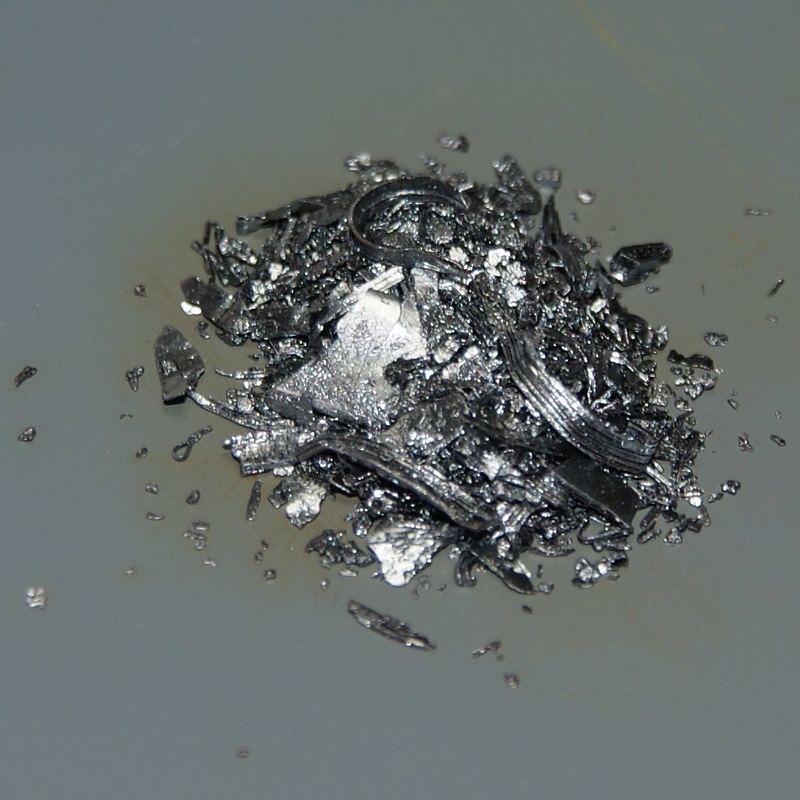Yod
53
I
Guruh
17
Davr
5
Blok
p
Protonlar
Elektronlar
Neytronlar
53
53
74
Umumiy xususiyatlar
Atom raqami
53
Atom massasi
126,90447
Mass raqami
127
Turkum
Galogenlar
Ranggi
Tosh-kulrang
Radioaktivlik
Yoʻq
From the Greek word iodes, violet
Kristall tuzilma
Asos markazli ortorombik
Tarix
Iodine was discovered by French chemist Bernard Courtois in 1811.
He treated the liquor obtained from the extraction of kelp, with sulfuric acid to produce a vapour with a violet color.
In 1812, Joseph Louis Gay-Lussac demonstrated that iodine was an element and its chemical relationship to chlorine.
He treated the liquor obtained from the extraction of kelp, with sulfuric acid to produce a vapour with a violet color.
In 1812, Joseph Louis Gay-Lussac demonstrated that iodine was an element and its chemical relationship to chlorine.
Qobiqdagi elektronlar soni
2, 8, 18, 18, 7
Elektron konfiguratsiyasi
[Kr] 4d10 5s2 5p5
Kelp was the main source of natural iodine in the 18th and 19th centuries
Jismoniy xususiyatlar
Faza
Qattiq modda
Zichlik
4,93 g/cm3
Erish harorati
386,85 K | 113,7 °C | 236,66 °F
Qaynash harorati
457,4 K | 184,25 °C | 363,65 °F
Eritish issiqligi
7,76 kJ/mol
Bugʻlanish issiqligi
20,9 kJ/mol
Solishtirma issiqlik sigʻimi
0,214 J/g·K
Yer po‘stidagi miqdori
0,000049%
Olamdagi miqdori
1×10-7%

CAS raqami
7553-56-2
PubChem CID raqami
807
Atom xususiyatlari
Atom radiusi
140 pm
Kovalentlik radiusi
139 pm
Elektrmanfiylik
2,66 (Poling boʻyicha)
Ionlashish potensiali
10,4513 eV
Molyar hajm
25,74 cm3/mol
Issiqlik oʻtkazuvchanlik
0,00449 W/cm·K
Oksidlanish darajasi
-1, 1, 3, 5, 7
Qo‘llanilish sohalari
Iodine compounds are important in organic chemistry and very useful in medicine.
A solution containing potassium iodide and iodine in alcohol is used to disinfect external wounds.
Silver iodide is a major ingredient to traditional photographic film.
Iodine is added to table salt to prevent thyroid disease.
A solution containing potassium iodide and iodine in alcohol is used to disinfect external wounds.
Silver iodide is a major ingredient to traditional photographic film.
Iodine is added to table salt to prevent thyroid disease.
Elemental iodine is toxic if taken orally
Izotoplar
Barqaror izotoplar
127IBeqaror izotoplar
108I, 109I, 110I, 111I, 112I, 113I, 114I, 115I, 116I, 117I, 118I, 119I, 120I, 121I, 122I, 123I, 124I, 125I, 126I, 128I, 129I, 130I, 131I, 132I, 133I, 134I, 135I, 136I, 137I, 138I, 139I, 140I, 141I, 142I, 143I, 144I